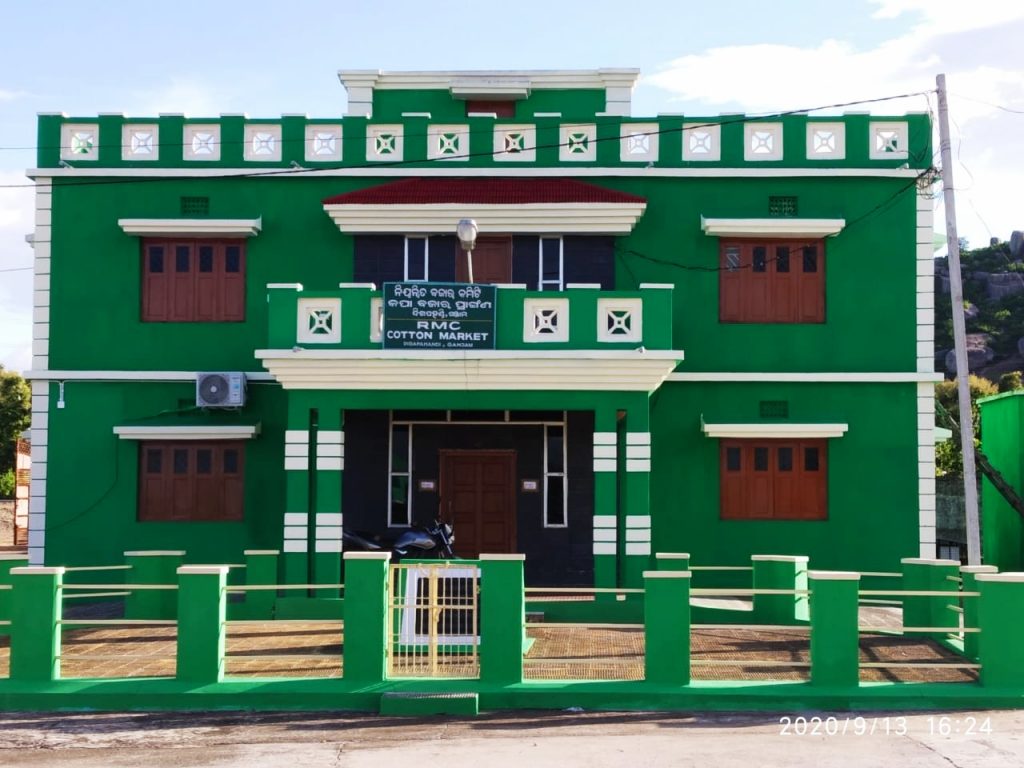Digapahandi: Cotton farmers in south Odisha used to face a lot of problem in marketing their produce. Distress sale was a major problem. This is expected to be sorted out with the setting up of a cotton ginning mill in Ganjam. It has brought hopes and cheers among cotton farmers.
Reports said a cotton processing plant was commissioned on the premises of Digapahandi Marketing Regulating Committee about a week ago. The plant has been set up on PPP mode with an investment of Rs2.10 crore. The plant is capable of producing about 50 quintals of processed cotton every day. This ginning mill will separate cotton fibre from seed bolls and dust particles, thus making ready for buyers on the basis of their quality.
It is said that thousands of cotton famers living in Digapahandi, Sanakhemundi, Chikiti, Patrapur, Shergad, Dharakote, Sorada, Bhanjanagar and Jagannath Prasad blocks will be immensely benefitted.
Also Read: Two dance training centres set up in Koraput
Owing to the absence of storage facilities, the farmers desperately look to sell their produce to traders of neighbouing Andhra Pradesh who usually cash in on their misery.
Delay in procurement was a major cause of concern for cotton farmers of Ganjam. The sole mandi of the district has been made functional at Digapahandi. Around 1,000 metric tonnes of cotton can be stored at the godown in front of the RMC office.
The administration assessed that as this plant and the godown are near the Ranchi-Vijayawada NH-326, transportation of cotton by farmers and traders will be easy. Besides, Berhampur railway station is only 35 km away.
The plant has created job scope for migrant returnees who used to work in cotton mills in Surat and other parts of the country.
It is estimated that over 1,000 skilled and unskilled workers can get direct and indirect employment by the plant while over 5,000 labourers working in lines sectors will be get scope of earning.
District agriculture officer Bhaskar Chandra Padhi said: “The cotton processing plant at Digapahandi will provide benefits to the farmers. The department has set a target of cultivating cotton in 242 hectares in Digapahandi and Sanakhemundi blocks in the current year. All possible help will be provided by the agriculture department to the farmers.”
Arun Kumar Mishra, the secretary of the RMC, said that farmers’ cotton will be processed to add quality so that both farmers and traders can get benefits.
Sadananda Dora, a cotton grower, said: “After cotton mandi was set up at Digapahandi, farmers started focusing more on cotton farming at Gokarnapur,Bajapalli, Kushapada, Narasighpur and other areas. But farmers had to suffer due to lack of necessary government support while pest attack could not be tackled often due to non-cooperation of the agriculture officials.”
The major problem was lack of procurement of the cotton, the farmers had to face distress sale and were bound to sell off their produce to Andhra traders at throwaway price.
Earlier, farmers used to raise cotton in 10 acres in the area, but for the last seven years, they have focused on maize cultivation, he added.
He further said if the government extends support to cotton farmers, the later will be encouraged to do this cultivation more than before. He added, “Even as the farmers face the situation every year, little has been done by the district administration to assuage their woes.”
It may be noted here that Cotton Corporation of India (CCI) has been buying cotton from farmers in Gajapati district.
The CCI went to Gajapati first because of the ginning mill that separates cotton fibre from seed bolls and dust particles. It is situated at Kesinga which is comparatively nearer to the district than Ganjam. The ginning mill at Aska has been closed for the last five years. Sources said cotton is grown over hectares of land in Sanakhemundi, Digapahandi, Patrapur, Seragada, Soroda and Dharakote. The district contributes to about 25 per cent of total cotton production in Odisha.
PNN
